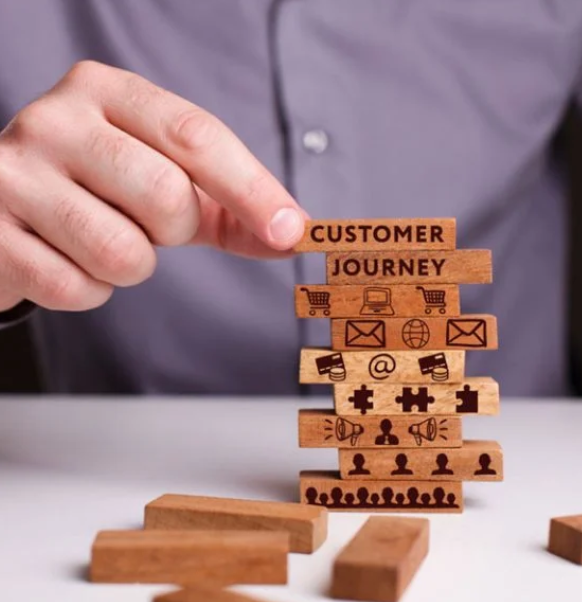The Journey of a Digital Campaign: From Concept to Completion
- 173 Views
- admin
- 04/24/2025
- Social Media
Digital marketing often appears spontaneous, with viral videos or trending topics seeming like natural occurrences. However, behind every successful campaign is a carefully planned and executed process designed to generate online attention. From initial research to real-time adjustments, crafting an effective digital campaign is a lengthy and strategic endeavor. Here’s a look at the key stages involved in a digital campaign and how these steps ensure its success.
Initial Planning and Strategy
The first step in any digital marketing campaign is understanding the brand and its market. This research phase is essential for marketing agencies working with new clients, as well as in-house teams needing to stay current with industry trends.
A SWOT analysis (Strengths, Weaknesses, Opportunities, Threats) is a common tool used to clarify a brand’s positioning and define the campaign’s objectives. Once this is established, setting clear and actionable goals using the SMART framework (Specific, Measurable, Achievable, Relevant, and Time-bound) allows marketers to track progress and determine success.
Audience Research and Segmentation
The foundation of any effective campaign lies in understanding the target audience. By researching demographics, preferences, and behavior, marketers can tailor their messaging to resonate deeply with their audience. Key research methods include:
- Surveys
- Social media listening
- Focus groups
- Customer interviews
- Analyzing market reports
Buyer personas are often developed to visualize the ideal customer’s journey. These personas help shape the sales funnel and ensure the campaign addresses potential barriers to conversion, guiding the audience through the buying process smoothly.
Selecting the Right Platforms
A successful campaign requires distributing content across the right channels. Different platforms cater to different audiences, so it’s important to choose wisely based on where the target demographic is most active. Larger campaigns may utilize several channels, but smaller businesses typically focus on a few select ones. Platforms can include:
- Social media (Instagram, Facebook, TikTok)
- Pay-per-click advertising
- Email marketing
- Influencer partnerships
- Blogs and podcasts
Each platform requires specific content formats, such as short-form videos for TikTok, ads for YouTube, and articles or long-form videos for blogs. Creative content, such as memes or user-generated content, may also play a role in connecting with audiences.
Content Creation
Content creation is at the heart of digital campaigns, and deciding the creative direction is crucial. Campaigns can take on different tones, such as professional minimalism (think Apple), humorous memes (think Netflix), or emotional storytelling (think John Lewis). With the advancement of AI-powered tools, content creation has become more efficient, speeding up the ideation process and enabling marketers to test various creative approaches before deciding on the best one.
AI tools are becoming increasingly integrated into content production, helping marketers create assets quickly, either for testing or as the final product.
Campaign Launch and Execution
Launching a campaign is only the beginning. Initially, the campaign will involve A/B testing different content to gather data, not necessarily to drive conversions right away. The goal at this stage is to see which content resonates most with the audience. Over time, marketers will identify the highest-performing content and channels, optimizing the campaign by reallocating budget and refining the messaging.
If initial efforts don’t meet expectations, marketers revisit the brainstorming phase, testing new content ideas and strategies to improve performance.
Ongoing Optimization
Real-time optimization is one of the unique aspects of digital marketing. As results come in, marketers continuously adjust their strategy to keep the campaign on track. For instance, if a video or post gains viral attention, the team must act quickly to capitalize on the momentum—whether by amplifying the reach, engaging with the audience, or creating follow-up content.
Marketers also regularly monitor the return on investment (ROI) of each platform. If a particular channel is underperforming, they may decide to shift resources to a more profitable platform, ensuring the budget is spent efficiently.
Tracking Performance and Measuring Success
As the campaign progresses, tracking its performance is critical. Metrics are compared to the SMART goals set during the planning phase to assess success. Some common key performance indicators (KPIs) include:
- ROI (Return on Investment)
- ROAS (Return on Ad Spend)
- Website traffic
- Leads and conversions
- Cost per Lead (CPL)
- Bounce rates
- Click-Through Rate (CTR)
While success is typically measured by maximizing value and minimizing costs, new businesses may require higher investment levels to establish themselves in the market. As marketers run more campaigns, their ability to refine strategies and improve outcomes should grow.
Conclusion
For those new to digital marketing, it’s clear that the process is both complex and ongoing. A digital marketing campaign involves multiple stages of research, testing, and optimization, requiring careful attention to detail and constant adaptation. Despite the efficiency of AI tools, human creativity and strategic thinking remain essential components for success. By following a structured approach, marketers can create campaigns that not only engage audiences but also deliver measurable results.
Recent Posts
- How AI is Revolutionizing Architectural Design: A Look at Tools, Trends, and the Future
- Streamlining Cyber Risk Assessments Through Automation
- Understanding the Difference Between Blockchain and Distributed Ledger Technology
- Is Bitcoin Mining Still a Viable Venture in 2025?
- Exploring AI: Unveiling Possibilities, Challenges, and Future Implications

